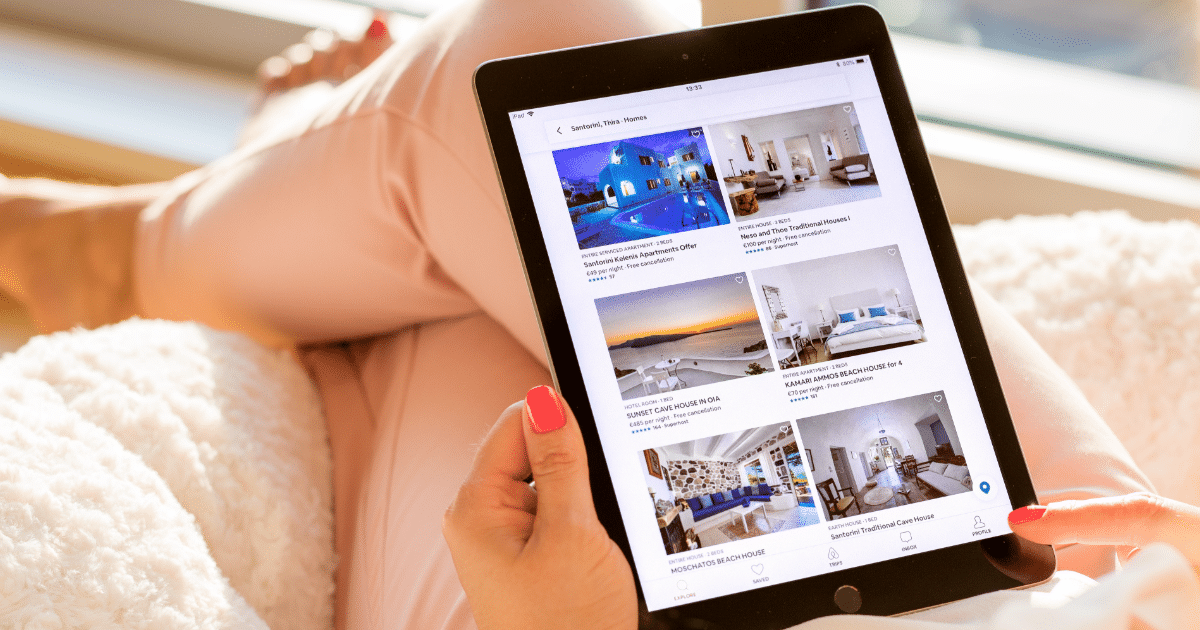
With B2B decision-makers constantly flooded with competitor’s content, your brand and message need to more than stand out and speak directly to their needs. We always said that the key is to reach clients at the right time, with the right message on the right device. And that still stands. Responsive display ads are one of the most powerful ways to achieve this, but here’s the catch: it’s not just about throwing more ads into the mix, it’s about using data to create highly targeted, personalized experiences that resonate with the audience in real-time.
Imagine this: You’ve just launched a new product aimed at IT decision-makers, but instead of a blanket approach with static ads, you use data to show them exactly what they need to see. Whether they’re viewing your ad on their desktop during work hours or on their mobile device during their commute, your message adapts to fit their device, their behavior, and even their role in the company. This is the future of advertising: personalization powered by data, and it’s the key to reaching decision-makers in a crowded digital space.
But here’s where it gets interesting: While personalization is critical, responsive display ads take it a step further by ensuring that your message isn’t just personal, it’s relevant across every touchpoint, across every device. The role of data in this ecosystem is undeniable; it fuels precision targeting, increases engagement, and maximizes ROI by adapting to the client behavior, journey, and readiness.
In this article, we’ll dive into the importance of responsive display ads, explore their main advantages, and show you how data is transforming the way B2B marketers reach, engage, and convert their audience.
What Are Responsive Display Ads?
Responsive display ads (RSAs) are a flexible ad format that adapts to the device, screen size, and even the user’s behavior. Unlike static banner ads that are fixed in size and appearance, RSAs automatically adjust their content, text, images, and even the layout, based on the context in which they appear. Whether your prospect is viewing an ad on their laptop, tablet, or mobile device, a responsive display ad ensures your message is delivered in the most engaging and effective format possible.
For B2B marketers, this adaptability means that the same creative can serve across multiple channels, websites, apps, social media, and more, without sacrificing user experience or performance. Responsive display ads give you the power to ensure your ads look great and perform optimally on any device, making them a cornerstone of any B2B display strategy.
What is the Main Advantage of Responsive Display Ads?
The main advantage of responsive display ads lies in their flexibility and efficiency. B2B decision-makers today engage with content across multiple devices, switching from mobile to desktop seamlessly throughout their day. If your display ads aren’t responsive, you risk delivering a subpar experience that could turn a potential lead away.
With responsive display ads, you’re ensuring that your creative adjusts to fit the screen size, maintaining the ad’s integrity and effectiveness no matter the device. This cross-device compatibility eliminates the need for separate ad versions tailored to specific devices, streamlining your creative process and improving efficiency.
Additionally, RSAs maximize reach while minimizing costs. Perhaps one of the responsive display ads benefits that would define budget allocation. As the ad automatically adapts to fit a variety of placements, you can focus on delivering a consistent message across platforms without worrying about spending extra on multiple ad designs. This flexibility allows for dynamic optimization, so your campaign can run smoothly while you focus on refining targeting and messaging.
- Cross-Device Compatibility: RSAs adjust automatically to fit the screen size of the device being used, ensuring a seamless experience no matter where your audience is engaging with your content.
- Increased Reach, Reduced Cost: With responsive ads, you can deliver your message consistently across a variety of platforms and devices without the need for multiple creative versions. This means you can maximize your reach while minimizing the costs of creating and managing multiple ad designs for different formats.
- Streamlined Creative Process: Instead of spending valuable time and resources tailoring separate ads for each device or platform, responsive ads automatically adjust to the optimal format. This not only saves you time but also improves the efficiency of your creative team, allowing them to focus on refining messaging and targeting rather than creating new formats.
- Dynamic Optimization: RSAs offer the ability to optimize on the fly. As the campaign progresses, these ads can adjust automatically based on performance metrics, ensuring your messaging remains relevant to your audience. This dynamic capability helps you avoid underperforming ads and lets you focus on refining your strategy rather than constantly tweaking creative.
- Improved User Experience: By ensuring that your ads are visually and functionally optimized across all devices, responsive display ads create a smoother, more engaging experience for users. This increases the likelihood that they’ll engage with your brand, whether it’s clicking through to a landing page or signing up for a demo.
When evaluating responsive display ads examples, you’ll find campaigns that automatically adjust their size, appearance, and format to fit various ad spaces, like a tech startup’s dynamic banner that swaps headlines and images based on user behavior or a retail brand’s carousel of product shots that seamlessly reorganizes for mobile, tablet, and desktop. To achieve these flexible, high‑impact units, follow responsive display ads best practices: use a mix of high‑resolution images and short, punchy headlines; supply clear branding assets (logos and color palettes); write concise, benefit‑focused descriptions; and include a strong call to action.
Why Personalization and Responsive Display Ads Matter to B2B Campaigns
Personalization in the context of display ads isn’t just about adding the decision-maker’s name to the headline; it’s about presenting them with relevant solutions to the problems they’re actively seeking to solve. B2B data, such as firmographics, demographics, and behavioral data, can be used to create hyper-targeted, responsive display ads that speak directly to the buyer’s unique needs. This isn’t just good timing. It’s data-driven precision at its best. The ad didn’t appear out of nowhere, it was powered by a deep understanding of her role, her goals, and the pain points the client’s dealing with right now.
Personalization, enabled by B2B data, ensures ads don’t just grab attention for a moment, it keeps clients engaged because it speaks their language, directly aligning with the strategic priorities she’s balancing.
For B2B marketers, this kind of targeted personalization through responsive display ads is where the magic happens. You’re not just throwing a wide net and hoping someone bites. You’re delivering relevant, impactful messaging that addresses the decision-maker’s specific needs, not just offering a generic solution.
But the real power? It builds trust and credibility over time. Decision-makers today are skeptical, they don’t have time for ads that feel like a waste of their attention. If an ad speaks to them at the right time, offering a solution that feels custom-made for their company’s unique situation, you’re no longer just one of many vendors vying for their attention. You’re an ally who understands their challenges, offering a solution that matters.
This level of personalized targeting doesn’t just increase engagement, it fosters a genuine connection. A responsive display ad that aligns with a decision-maker’s real-time needs doesn’t just disrupt their browsing experience, it enhances it. And that’s how trust is built overtime.
Cost-Efficiency and Budget Flexibility with Data-Driven Ads
One of the major pain points for B2B decision-makers is ensuring that their marketing spend drives maximum impact while staying within budget. Responsive display ads help alleviate this concern by offering unparalleled cost-efficiency.
Unlike traditional display ads that may need to be redesigned for each platform, responsive display ads optimize themselves based on where they appear, cutting down on the need for multiple creatives. This budget-friendly approach means that B2B marketers can spend less time and money on ad production while still maintaining a high level of performance across devices.
Moreover, data-powered ads take targeting to the next level. With the right data, you can ensure that your ads are shown only to those who are most likely to engage, ensuring that every ad dollar spent is a dollar well invested. Whether you’re targeting high-level decision-makers or specific industries, responsive display ads ensure your budget is being spent on the audience that matters most, leading to greater ROI.
Targeting and Retargeting: Data-Driven Precision
B2B marketers often struggle with targeting the right audience at the right stage of their buyer’s journey. The beauty of responsive display ads is that they are not just targeted in terms of demographics and behavioral data; they can also adapt in real time based on how a user interacts with the ad.
Imagine someone who visited your website last week but didn’t convert, maybe they checked out a case study but left before requesting a demo. Responsive display ads make it possible to retarget this visitor with a relevant, personalized message on a different device, keeping your brand top-of-mind and gently guiding them back to your website.
With retargeting powered by B2B data, you can continually engage potential buyers who’ve interacted with your content, even when they’re not actively seeking a solution. By serving ads that are tailored to their previous interactions, you increase the likelihood of conversion, making your campaigns more efficient and effective.
Balancing Awareness and Conversion with Responsive Display Ads
Proper B2B marketing isn’t just about pushing for an immediate sale; it’s about building long-term relationships. With responsive display ads, you can effectively strike the balance between awareness and conversion.
- Brand Awareness: At the top of the funnel (TOFU), responsive display ads serve as a tool for getting your name in front of a large, yet targeted, audience. These ads raise awareness about your solution, helping prospects recognize your brand and what it stands for.
- Lead Conversion: As prospects move down the funnel, responsive display ads shift in tone and content to address their evolving needs. By using retargeting, B2B marketers can ensure that their ads provide increasingly specific solutions that move prospects from consideration to decision.
Too often, marketers focus heavily on one or the other, but successful campaigns blend both elements, creating a holistic journey for prospects. Responsive display ads allow marketers to adapt the messaging based on where the prospect is in their buying journey, providing a personalized experience that aligns with their needs and interests, whether they’re just learning about your brand or ready to make a purchasing decision.
It’s because B2B data-powered responsive display ads evolve with the prospect’s behavior. At the top of the funnel (TOFU), they can focus on broad awareness, introducing your brand and value proposition in a non-intrusive, informative manner. But as the prospect moves down the funnel, engaging with content or browsing your site, the messaging shifts to become more targeted and conversion-focused.
This ability to adapt messaging across the journey is invaluable for B2B marketers aiming to strike that delicate balance between engaging potential buyers and driving them to conversion. And here’s the game-changer: leveraging B2B data enables marketers to fine-tune their display ad campaigns for even more precise targeting. By using firmographics, demographics, and behavioral data, you can ensure that the right message is being served to the right prospect at the right time. Whether they’re still gathering information or actively considering a purchase, the message remains relevant.
This kind of data-driven integration isn’t confined to a single channel. To truly succeed, your display ads must work across multiple touchpoints, email, social media, retargeting ads, and even webinars. A multi-channel approach ensures that your display ads are part of a larger, cohesive strategy. You’re not just showing your ads in isolation, but continuously engaging with prospects across their preferred platforms and devices, delivering consistent messaging that reinforces your value proposition.
What is the Difference Between DSA and RSA Ads?
While responsive display ads (RSAs) are incredibly versatile, they can sometimes be confused with dynamic search ads (DSAs). Both formats utilize automation to display ads based on user behavior, but they work differently.
- DSA: Dynamic search ads are automatically generated based on the content of your website. They are ideal for e-commerce or businesses with large inventories. DSAs are focused on targeting search intent by matching user queries to relevant pages on your site, often used to capture bottom-of-funnel traffic.
- RSA: Responsive display ads, on the other hand, are more versatile. They allow for greater customization in terms of creative, adjusting images, headlines, and descriptions based on a variety of factors, including user behavior, device, and context. RSAs are perfect for brand awareness and lead generation, as they can adapt to different audience segments and maximize the reach of your message.
In essence, RSAs provide more flexibility and personalization, while DSAs focus more on matching search intent with content. Both serve valuable roles but are best used in tandem, depending on your campaign goals.
When Should You Use Responsive Display Ads?
Responsive display ads should be a key component of your B2B marketing strategy when you’re looking to maximize reach across multiple devices while delivering a personalized experience. They’re particularly useful in the following scenarios:
- Brand Awareness Campaigns: When you want to reach a broader audience without compromising the user experience. Responsive display ads are perfect for introducing your brand and offering solutions in a way that feels natural, regardless of whether your audience is on a desktop, tablet, or mobile.
- Lead Nurturing: For businesses looking to engage prospects over time, responsive display ads provide the flexibility to continue the conversation with prospects as they move through the sales funnel.
- Retargeting: When targeting those who have previously engaged with your content but haven’t yet converted, responsive display ads are an excellent tool for re-engaging them with relevant messaging based on their previous interactions with your brand.
Personalization That Performs: The Real Role of Data in Display Strategy
The true power of responsive display ads comes from their ability to leverage B2B data to personalize each interaction. Personalization isn’t just about using a decision-maker’s name; it’s about presenting them with the right message at the right time, tailored to their specific business needs and pain points. B2B data, such as job role, industry, past interactions, and even social engagement, allows you to craft ads that speak directly to the unique challenges each prospect faces.
With responsive display ads driven by data, you move beyond generic, one-size-fits-all content to create targeted, engaging ads that increase the likelihood of conversion and foster a stronger relationship with your prospects. Finally, with the rise of AI, machine learning, and automated ad creation, responsive ads will only become smarter, more efficient, and more personalized. In a world where decision-makers expect seamless, relevant content delivered at the right moment, staying ahead of these trends ensures that your campaigns remain competitive, cost-effective, and future-proof.
Empower your display advertising campaigns with B2B data.
Supercharge your B2B marketing strategies today.










